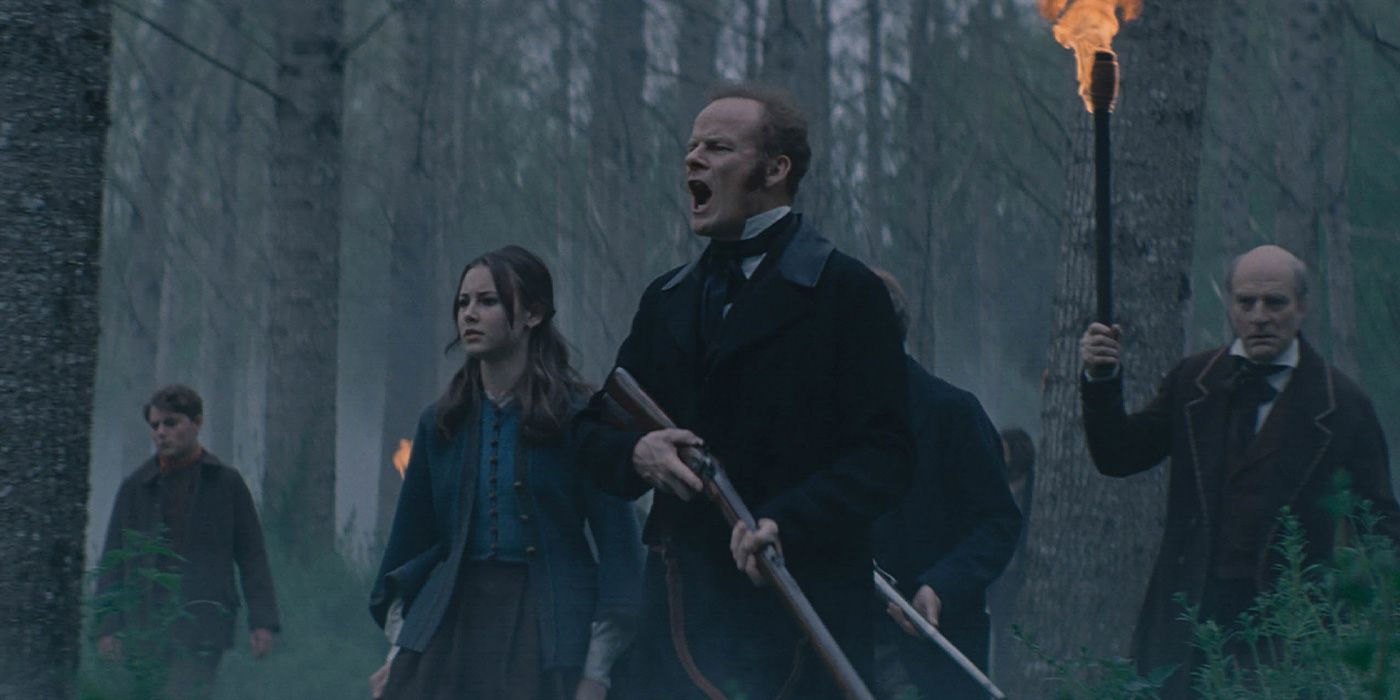Somewhere buried in Eight for Silver, there’s a strong central theme about how the sins of the powerful are visited upon everyone. You can see it in the prologue that’s set in World War I and in the film’s inciting event. And yet this theme always remains underdeveloped because writer/director Sean Ellis puts more effort in the gore and atmosphere surrounding the werewolf mythos he’s concocted. To be fair, it’s a nifty spin on the werewolf movie, but the film misses where it really needs to concern itself. There are no strong characters, and the plot only seems to serve the next bloody death or horrifying transformation. The trappings of Eight for Silver are fairly lavish, but by the end you can see that its bark is far more fearsome than its bite.
In the late 19th century, manor house lord Seamus Laurent (Alistair Petrie) has a dispute with local Roma over some land. Rather than reasoning with the Roma, he simply has them all murdered and pillaged, which isn’t only a moral error, but also because the Roma always have powers in movies and know of ancient dark magic. The Roma choose to curse the lord, his family, and the inhabitants of the land with nightmares. Children, including the lord’s son Edward (Max Mackintosh), follow those nightmares to a field where they dig up silver teeth belonging to the Roma. This eventually leads to Edward’s disappearance followed by the gruesome death of a local boy at the claws of a mysterious beast. Seamus calls in pathologist John McBride (Boyd Holbrook) to investigate as the beast continues to hunt the people of the village.
The werewolf mythology Ellis creates is fairly compelling as he tries to link it all the way back to the silver that was paid to Judas for betraying Jesus, although the Roma having special curse powers feels like a tired and boring trope that needs to be retired. The use of werewolf transformations is particularly inventive, and again, the broader theme of innocents suffering ties in nicely with a werewolf—a strong beast feasting on the weak. But the theme never gets built out beyond that, and ultimately Ellis’ goal seems to be in regular horror scares and gore with his werewolf (a poorly designed CGI creation that lacks any of the imagination Ellis brings to the surrounding mythology). Ellis has a bunch of individual elements—the werewolf, the nightmares, the gore, the atmosphere—to create terror, but they never add up to anything greater.
Another serious flaw comes from making McBride the hero, or at least with Holbrook’s performance. I wouldn’t say Holbrook is a “bad” actor (I liked him quite a bit in Logan), but there’s nothing to McBride even though we learn that he’s haunted by loss and a similar case involving a beast. Eight for Silver makes McBride the hero because he’s handsome and knows more than the rest of the characters, but that doesn’t make him interesting. It feels like any thoughtful touches to McBride that would make him compelling have been wiped away. Here’s a man who has suffered and faces a dangerous enemy, so being a “man of action” isn’t good enough. McBride could have been a far more nuanced and complex hero, and instead we get the blandest version possible.
In some ways, Eight for Silver ends up being almost a parody of the “elevated horror” genre. Rather than being a fun werewolf movie that cleverly twists the genre, it becomes enamored of its own style and violence rather than having anything to say or characters worth caring about. It coasts on twisting a few werewolf tropes, playing up the atmosphere, using a period setting, and then piling on the gore. It has the illusion of substance, but never drills down beyond its superficial aspects. Gore and atmosphere are all well and good when used correctly, but here they’re trying to stand in for substance rather than style. That carries the film somewhat, but by the end all you’ve got is a hollow growl.
Rating: C
For more of our Sundance 2021 reviews, check out the links below:

